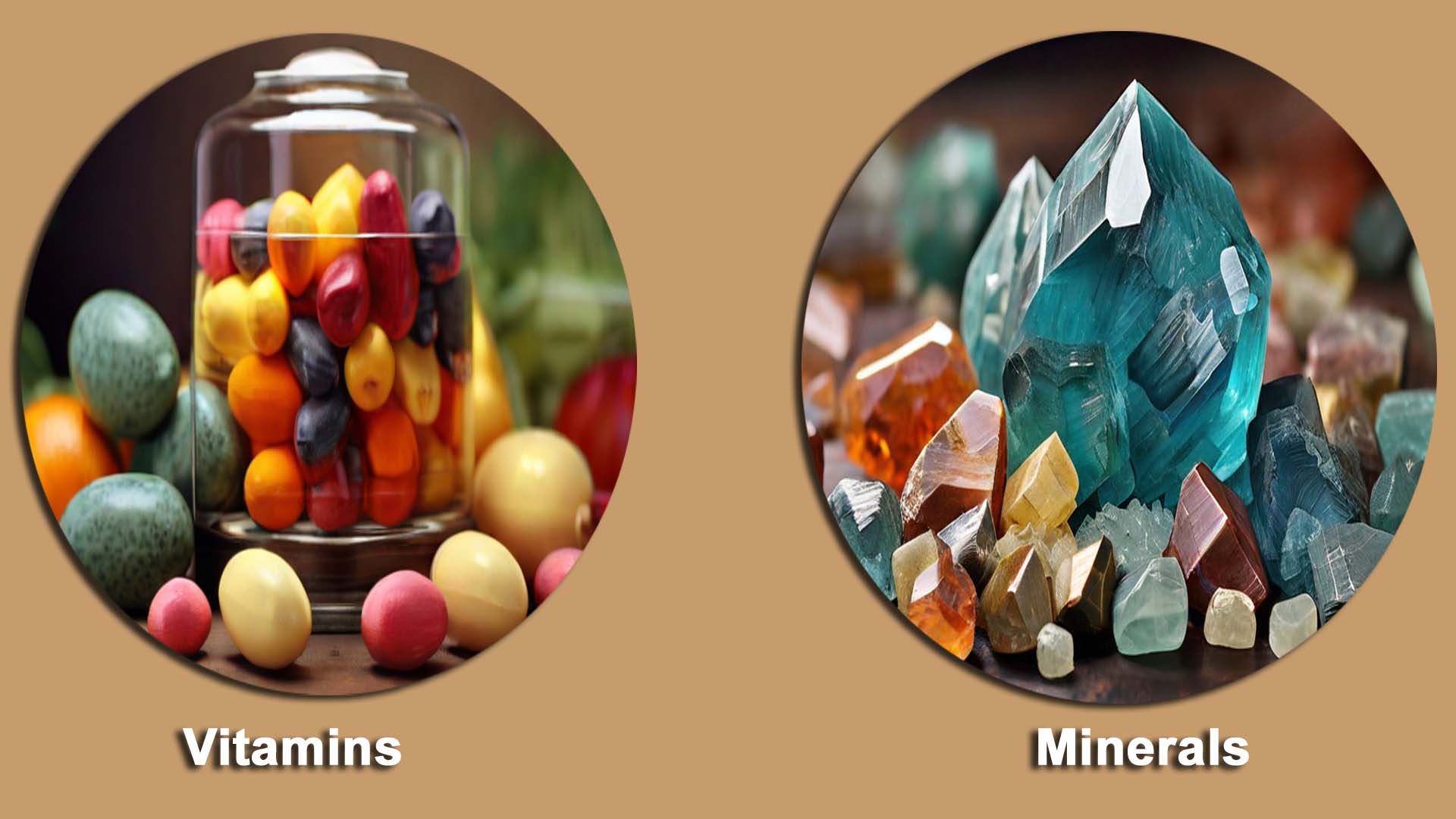

 Understanding the Distinction-Vitamins vs. Minerals
Understanding the Distinction-Vitamins vs. Minerals
In the realm of nutrition, the terms “vitamins” and “minerals” are often used interchangeably or even grouped together. While they are both essential nutrients vital for various bodily functions, they serve distinct roles in maintaining overall health and well-being. Understanding the differences between these two categories of nutrients is crucial for optimizing one’s diet and ensuring proper nutritional intake.
Vitamins: The Micronutrient Catalysts
Vitamins are organic compounds that the body requires in small amounts to function properly. They play crucial roles in metabolism, immune function, growth, and development. Vitamins are divided into two main categories based on their solubility: water-soluble and fat-soluble.
1. Water-Soluble Vitamins: These include vitamin C and the B-complex vitamins (such as B1, B2, B3, B5, B6, B7, B9, and B12). Water-soluble vitamins dissolve in water and are not stored in the body to a significant extent. They are easily excreted through urine, which means regular intake is essential. These vitamins are primarily found in fruits, vegetables, whole grains, and legumes.
2. Fat-Soluble Vitamins: Fat-soluble vitamins, including vitamins A, D, E, and K, are absorbed along with fats in the diet and can be stored in the body’s fatty tissues and liver. Unlike water-soluble vitamins, excess fat-soluble vitamins can accumulate in the body and lead to toxicity if consumed in large doses. Food sources of fat-soluble vitamins include dairy products, eggs, liver, fish oils, and certain fruits and vegetables.
Vitamins act as catalysts for biochemical reactions within the body, helping enzymes to perform their functions effectively. Each vitamin serves specific roles, such as supporting vision (vitamin A), maintaining bone health (vitamin D), and protecting cells from damage (vitamin E). Deficiencies in vitamins can lead to various health problems, ranging from fatigue and impaired immune function to more severe conditions like night blindness (vitamin A deficiency) or rickets (vitamin D deficiency).
Minerals: The Inorganic Building Blocks
Minerals are inorganic elements found in soil and water that are essential for human health. Unlike vitamins, minerals are not organic compounds and do not contain carbon. They are divided into two categories based on the body’s requirements: major minerals (macrominerals) and trace minerals (microminerals).
1. Major Minerals: Major minerals are required by the body in larger amounts and include calcium, phosphorus, magnesium, sodium, potassium, chloride, and sulfur. These minerals play fundamental roles in bone health, fluid balance, nerve function, muscle contraction, and maintaining proper pH levels in the body. Major minerals are abundant in a wide range of foods, including dairy products, leafy greens, nuts, seeds, and whole grains.
2. Trace Minerals: Trace minerals are needed in smaller quantities but are equally important for various physiological processes. This category includes iron, zinc, copper, selenium, iodine, manganese, fluoride, and chromium, among others. Trace minerals participate in enzyme reactions, hormone synthesis, immune function, and antioxidant defense. Sources of trace minerals include seafood, meat, nuts, seeds, and fortified foods.
Minerals serve as essential components of bones, teeth, and body fluids, and they play critical roles in maintaining cellular function and overall health. Deficiencies in minerals can lead to a range of health issues, including weakened bones (calcium deficiency), anemia (iron deficiency), and impaired immune function (zinc deficiency).
Key Differences
While both vitamins and minerals are vital for health, there are several key distinctions between them:
1. Chemical Structure: Vitamins are organic compounds containing carbon, whereas minerals are inorganic elements.
2. Solubility: Vitamins are classified as either water-soluble or fat-soluble, whereas minerals do not share this classification.
3. Storage: Fat-soluble vitamins can be stored in the body, while water-soluble vitamins are excreted more readily. Minerals may be stored in tissues or bones, but they do not have a distinct storage system like fat-soluble vitamins.
4. Amount Required: Vitamins are needed in small amounts, whereas minerals may be required in larger or smaller quantities depending on the specific mineral.
5. Functions: Vitamins primarily act as coenzymes or precursors to coenzymes, while minerals often serve as cofactors for enzymes or as structural components in tissues.
In conclusion, while both vitamins and minerals are essential for maintaining health and preventing deficiency-related disorders, they differ in their chemical structure, solubility, storage, and functions within the body. A balanced diet that includes a variety of nutrient-rich foods is essential for meeting the body’s requirements for both vitamins and minerals and supporting overall health and well-being.